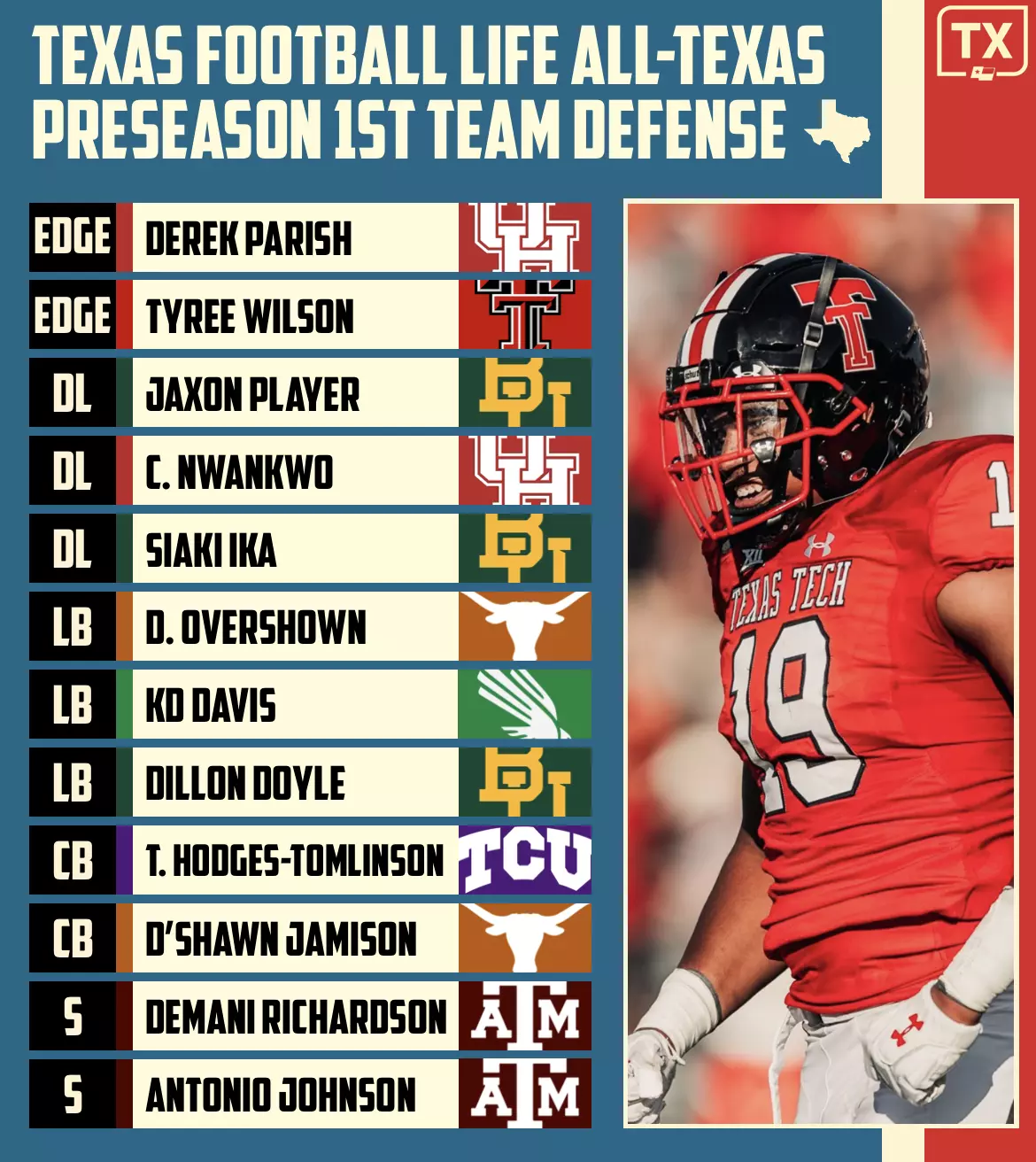As an Amazon Associate, I earn from qualifying purchases.
This article from the teamkathycarter website discusses about What is Tfl in Football.
In football, TFL stands for Tackles for Loss, which refers to when a defensive player tackles the ball carrier behind the line of scrimmage, resulting in a loss of yardage for the offence.
Tackles for Loss (TFL) are a crucial defensive statistic in football that highlights a player’s ability to disrupt the opposing team’s offensive plays by pushing them back behind the line of scrimmage. TFLs are often achieved through strong defensive strategies, quick reflexes, and precise timing.
Players who excel in TFLs can significantly impact the outcome of a game by putting pressure on the opposing team’s offence and limiting their ability to advance the ball. Understanding the importance of TFLs can provide valuable insights into a player’s defensive skills and overall contribution to their team’s success on the field.
The Basics Of TFL in Football
In football, TFL stands for Tackle for Loss. It refers to a defensive play where a player tackles the ball carrier behind the line of scrimmage. Resulting in a loss of yardage for the offensive team. TFL is a crucial defensive statistic that can significantly impact a game’s momentum and outcome. Understanding the basics of TFL in football is essential for both players and fans to appreciate the significance of this defensive play.
Definition Of TFL in Football
The term TFL, or Tackle for Loss, is a statistical category used in football to track the number of times a defensive player successfully tackles the ball carrier behind the line of scrimmage, resulting in a loss of yardage for the offence. This can occur when a defensive player penetrates the offensive line and tackles the ball carrier before they can advance past the line of scrimmage.
Importance Of TFL in Football
Tfl plays a crucial role in disrupting the momentum of the offensive team and putting them at a disadvantage. It can force the offense into unfavorable down-and-distance situations, making it more challenging for them to move the ball effectively. Additionally, Tfl can demoralize the opposing team and energize the defense, making it a pivotal defensive achievement in football.
Different Types Of TFL in Football

Credit: stoutbluedevils.com
TfL in football refers to tackles for loss, which occur when a defensive player tackles the ball carrier behind the line of scrimmage, resulting in a loss of yards for the offensive team. There are different types of TFL, each with its own characteristics and impact on the game.
Run TFL in football
Run TFL happens when a defensive player tackles the ball carrier while attempting to run the ball, causing a loss of yardage for the offense.
Pass TFL in football
Pass TFL occurs when a defensive player tackles the quarterback or receiver behind the line of scrimmage during a passing play, resulting in a loss of yards for the offense.
Combined Tfl
Combined TFL involves a combination of both run and pass TFL, where the defensive player successfully disrupts the offensive play, leading to a loss of yardage for the opposing team.
The Players Who Excel At TFL in Football
Defensive Ends- TFL in Football
Defensive ends are key players when it comes to TFL in football. They are responsible for disrupting the opponent’s running game by creating tackles for loss. Players in this position need to have exceptional speed, agility, and strength to penetrate the offensive line and make impactful tackles behind the line of scrimmage.
Defensive Tackles
Defensive tackles play a crucial role in achieving TFL in football. They are tasked with clogging up running lanes and breaking through the offensive line to make tackles in the backfield. These players possess immense power and technique to overpower blockers and stop the opposing team’s running plays.
Linebackers
Linebackers are known for their ability to excel at TFL in football. They are the primary playmakers on the defence and are often involved in disrupting running plays by quickly diagnosing the opponent’s strategies and making tackles behind the line of scrimmage. Their combination of speed, strength, and instincts makes them formidable in achieving Tfl.
Strategies For Achieving Tfl
Studying Opponents
Understanding your opponents’ tendencies and play-calling is crucial in achieving Tfl in football. By studying film and analyzing their formations, you can anticipate their next move and react effectively. This strategic approach enables you to disrupt the opponent’s plays and create opportunities for tackles for loss.
Improving Technique
Enhancing your technique through consistent practice and skill development is essential for achieving Tfl in football. Focusing on proper footwork, hand placement, and leverage can give you the edge to penetrate the offensive line and make impactful tackles behind the line of scrimmage. By refining these fundamental skills, you can increase your Tfl count and become a disruptive force on the field.
Effective Communication
Clear and efficient communication among defensive players is paramount for achieving TFL in football. By effectively coordinating stunts, blitzes, and shifts, the defensive unit can create confusion for the offence and capitalize on opportunities to penetrate the line and make impactful tackles. Establishing a cohesive communication system is vital for executing successful TFL strategies.
The Impact Of TFL on The Game
When it comes to football, there are a lot of different stats and metrics that coaches and analysts use to evaluate a player’s performance. One of the most important of these is Tfl, or tackles for loss. A Tfl occurs when a defensive player tackles the ball carrier behind the line of scrimmage, causing the offense to lose yardage. While this may seem like a small thing, TFLS can have a huge impact on the game. In this post, we’ll take a look at some of the ways that Tfls can change the momentum of a game, force turnovers, and build confidence for the defense.
Changing Momentum
One of the most significant impacts of Tfls is their ability to change the momentum of a game. If a defence is able to consistently stop the offence behind the line of scrimmage, it can demoralize the offence and give the defence a huge boost of energy. This can lead to turnovers, sacks, and other big plays that can completely shift the momentum of a game. Additionally, Tfls can help a defence get off the field more quickly, giving the offence more opportunities to score.
Forcing Turnovers
Another important impact of Tfls is their ability to force turnovers. When a defence is able to consistently stop the offence behind the line of scrimmage, it puts the offence in difficult down-and-distance situations. This can lead to more passing plays, which in turn increases the chances of interceptions and fumbles. Additionally, if a defence is able to create Tfls on first or second down, it can force the offence into long third-down situations where they are more likely to make mistakes.
Building Confidence- TFL in Football
Finally, TFLs can help build confidence for the defense. When a player makes a TFL, it can be a huge boost to their confidence and momentum. This can lead to more aggressive play, better communication, and an overall improvement in defensive performance. Additionally, TFLs can help a defense gain respect from their opponents, which can lead to more strategic opportunities to make big plays.
| Tfl Impact on the Game | Description |
|---|---|
| Changing Momentum | Tfls can shift the momentum of a game in favour of the defence. |
| Forcing Turnovers | Tfls can lead to turnovers and difficult down-and-distance situations for the offense. |
| Building Confidence | Tfls can boost the confidence of individual players and the defence as a whole. |
Overall, TFLs are an important metric for evaluating defensive performance in football. They can change the momentum of a game, force turnovers, and build confidence for the defence. By consistently making TFLs, a defence can put itself in a better position to win games and compete at the highest level.

Famous Tfl In Football History
Famous TFLs in Football History have left an indelible mark on the sport, showcasing the exceptional skill and athleticism of the players involved. Throughout the years, several standout athletes have made significant contributions in terms of tackles for loss (TFL) in football, earning themselves a place in the annals of football history. Let’s delve into the remarkable TFL records set by some of the most iconic figures in the sport.
Reggie White’s TFL Record- TFL in Football
Reggie White, also known as the “Minister of Defense,” made a profound impact on the game with his unparalleled ability to disrupt opposing offences. His exceptional technique and sheer strength allowed him to achieve a staggering number of tackles for loss, solidifying his status as one of the most dominant defensive players in football history.
Jj Watt’s Dominance- TFL in Football
JJ Watt’s extraordinary defensive prowess has been exemplified by his exceptional performance in recording tackles for loss. His combination of speed, power, and instinct on the field has enabled him to consistently outmanoeuvre offensive lines and make impactful plays, earning him a reputation as a force to be reckoned with.
Lawrence Taylor’s Impact- TFL in Football
Lawrence Taylor revolutionized the linebacker position with his unparalleled speed and relentless pursuit of the ball carrier. His ability to consistently disrupt plays and accumulate tackles for loss redefined the expectations for defensive players, leaving an enduring legacy in the realm of football history.
Frequently Asked Questions about TFL in Football
What Does Tfl Stand For Nfl?
TFL stands for Total Football League, a fantasy football league platform for fans to manage their own teams.
What Does Tfls Stand For In Football?
TFLS in football stands for “Total Forward Line Stats,” indicating performance metrics for attacking players on the field.
Is A TFL a Sack?
No, a TFL is not a sack. A TFL stands for “tackle for loss” in football.
What Is An Int In Football?
An interception, in football, occurs when a defensive player catches a pass intended for an offensive player.
Last Word about TFL in Football
Understanding TFL in football is crucial for defensive strategies and player performance. It impacts the game significantly. By grasping its significance, teams can elevate their gameplay and achieve success on the field. Embrace the knowledge of TFL to enhance your football expertise.
Keep learning and improving!
As an Amazon Associate, I earn from qualifying purchases.


